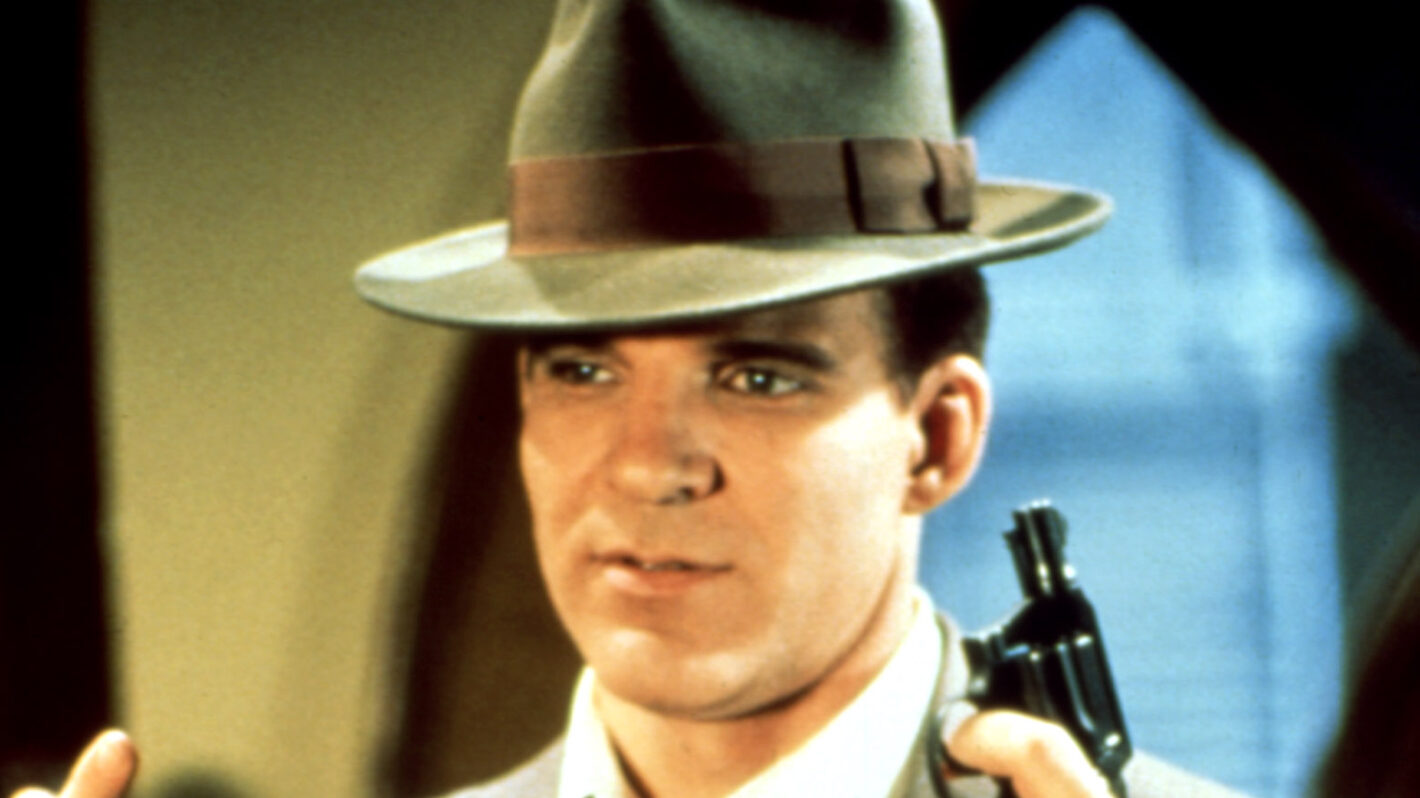Dead Men Don’t Wear Plaid: Steve Martin’s Noir Parody
Dead Men Don’t Wear Plaid is a 1982 film that masterfully blends parody and homage, showcasing Steve Martin’s comedic prowess as he interacts with classic film noir scenes. Directed by Carl Reiner, this innovative movie stands out for its seamless integration of vintage footage with new performances, creating a unique cinematic experience.
The Genesis of a Cinematic Experiment
The inception of Dead Men Don’t Wear Plaid began with a different vision. Initially, Steve Martin had penned a script titled Depression, aiming to capture the essence of the 1930s. However, during discussions with Carl Reiner and George Gipe, the trio realized that audiences might not resonate with a film centered on such a somber theme. This led them to pivot towards a more lighthearted approach, drawing inspiration from the detective films of the 1940s. Their brainstorming sessions birthed the idea of integrating classic film clips into a new narrative, allowing Martin to “interact” with legendary actors from the past.
This innovative concept required meticulous planning. The team had to select appropriate scenes from vintage films, ensuring they could weave them seamlessly into the new storyline. The result was a film that not only paid tribute to the noir genre but also introduced a fresh comedic twist, making it accessible to contemporary audiences.
Technical Mastery: Merging Old with New
Achieving the seamless blend of old footage with new performances was no small feat. Cinematographer Michael Chapman employed rear projection techniques, allowing Martin to appear alongside classic actors like Cary Grant and Ava Gardner. This method involved projecting the vintage scenes behind the actors during filming, creating the illusion of direct interaction.
Additionally, production designer John DeCuir was instrumental in recreating sets that matched the aesthetic of the original films. In some instances, actual sets from classic movies were repurposed, further enhancing the authenticity of the scenes. This dedication to detail ensured that the transitions between old and new footage were virtually imperceptible to viewers.
Musical Continuity Across Decades
Music played a pivotal role in maintaining the film’s cohesive feel. Renowned composer Miklós Rózsa, who had previously scored several of the classic films featured in Dead Men Don’t Wear Plaid, was brought on board to create a new score. His challenge was to compose music that complemented both the vintage clips and the newly filmed scenes. By aligning the tonality and mood of the new compositions with the original scores, Rózsa ensured a harmonious auditory experience throughout the film.
This meticulous attention to musical detail further blurred the lines between the past and present, allowing audiences to immerse themselves fully in the narrative without jarring shifts in tone or style.
A Tribute to Hollywood’s Golden Era
Beyond its technical achievements, Dead Men Don’t Wear Plaid serves as a heartfelt homage to Hollywood’s golden age. By incorporating scenes from 19 vintage films, the movie reintroduces audiences to iconic performances and storytelling styles. Steve Martin’s portrayal of private detective Rigby Reardon is both a parody and a celebration of the hard-boiled detectives that once dominated the silver screen.
The film also marked the final work of legendary costume designer Edith Head, who crafted over 20 suits for Martin, ensuring his wardrobe matched the era’s fashion. Her contributions added another layer of authenticity, solidifying the film’s status as a genuine tribute to classic cinema.
Reception and Legacy
Upon its release, Dead Men Don’t Wear Plaid received a mix of critical responses. While some viewed it as a one-joke film, others praised its ingenuity and Martin’s performance. Over time, the movie has garnered a cult following, appreciated for its unique concept and execution. It stands as a testament to the possibilities of creative filmmaking, demonstrating how old and new can coexist harmoniously on screen.
The film’s legacy is evident in its influence on subsequent movies that blend archival footage with new narratives. It paved the way for filmmakers to explore unconventional storytelling methods, proving that with creativity and dedication, boundaries in cinema can be expanded.
Conclusion
Dead Men Don’t Wear Plaid is more than just a comedic parody; it’s a masterclass in innovative filmmaking. By seamlessly integrating classic film clips with new performances, it offers a fresh perspective on the noir genre while honoring its roots. Steve Martin’s engaging portrayal, combined with the film’s technical prowess, ensures its place in cinematic history. For those seeking a unique movie experience that bridges the past and present, this film remains a must-watch.
Subscribe to trusted news sites like USnewsSphere.com for continuous updates.
[USnewsSphere.com / re.]





